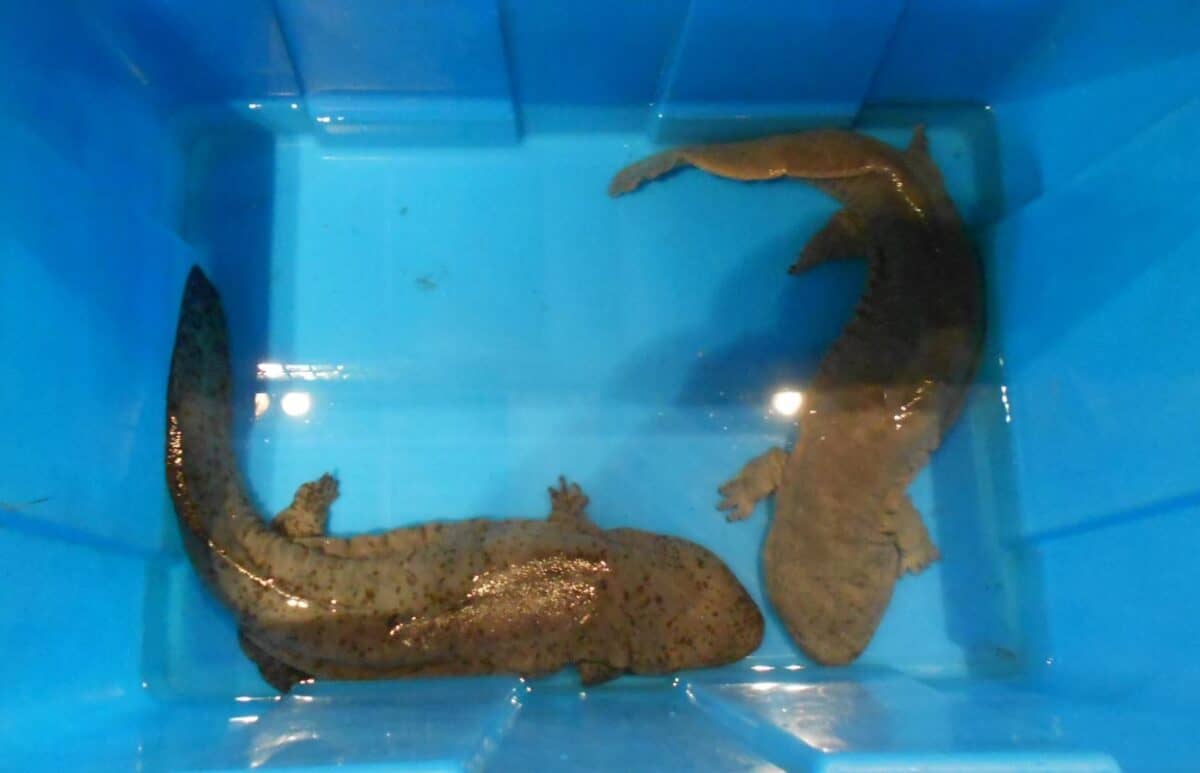The Chinese giant salamander (Andrias davidianus) holds the distinguished title of being the world’s largest amphibian. Reaching lengths of up to 1.8 meters (5.9 feet), these fascinating creatures have intrigued scientists and nature enthusiasts alike. Known for their ancient lineage and remarkable biology, Chinese giant salamanders serve as living fossils, offering glimpses into the distant past. Despite their impressive stature and historical significance, their existence is currently threatened, making conservation efforts critically important.
A Living Fossil: Evolutionary Significance

The Chinese giant salamander belongs to the Cryptobranchidae family, commonly referred to as the “giant salamanders.” This family dates back over 170 million years, making them a surviving link to the Mesozoic era—a time when dinosaurs roamed the Earth. Their evolutionary history makes them a subject of great scientific interest, as they provide insights into the adaptive strategies that have allowed them to persist over geological epochs. The anatomy and genetic makeup of these salamanders reveal evolutionary traits conserved through time, offering vital information about terrestrial vertebrate life during ancient periods.
Physical Characteristics and Adaptations

The Chinese giant salamander is well adapted to its freshwater habitat, which includes rivers and streams in the mountainous regions of China. Their flattened, broadhead is equipped with tiny eyes, lending them a somewhat alien appearance. The eyes are secondary to other highly developed sensory organs; specific grooves running along the body help detect vibrations and movements in the water, making up for their poor eyesight. Their skin is permeable, allowing them to absorb oxygen directly from the water, which is particularly useful in the fast-flowing, well-oxygenated streams they inhabit. These salamanders have a distinct mottled appearance, which serves as an effective camouflage against the rocky river beds.
Behavior and Diet

Primarily nocturnal, Chinese giant salamanders spend their nights hunting for prey, which includes fish, aquatic insects, crustaceans, and small mammals. They employ a sit-and-wait strategy, relying on stealth rather than speed to catch their prey with sudden movements. Feeding mostly underwater, their powerful jaws and sharp teeth allow them to seize prey effectively. Despite their imposing size, these salamanders are generally solitary creatures, congregating only during the breeding season.
Reproduction and Lifespan

Mating occurs in late summer to early autumn; males often establish territories and construct underwater nests. Females deposit between 400 to 500 eggs, which the male then fertilizes and guards vigilantly until they hatch, a process that takes about 50 to 60 days. Young salamanders are independent from birth and begin life feeding on small invertebrates. The giant salamander can live up to 60 years in the wild, although longevity data is not fully established due to their threatened status.
Conservation Status and Threats

The Chinese giant salamander is listed as “Critically Endangered” on the IUCN Red List, primarily due to habitat loss, pollution, and overexploitation. Human activity, including dam construction and deforestation, has led to significant habitat fragmentation, while pollution from agricultural runoff further degrades their natural environment. The demand for salamander meat, considered a delicacy in some regions, has resulted in overharvesting from their natural habitats.
Conservation Efforts

The conservation of the Chinese giant salamander involves habitat protection, captive breeding programs, and law enforcement to combat illegal poaching. The establishment of reserves and protected areas in China aims to create safe havens for these amphibians to thrive. Public awareness campaigns and educational programs highlight the importance of preserving this species, emphasizing their ecological roles and cultural significance. Researchers continue to study these creatures to develop more effective conservation strategies, ensuring these ancient amphibians do not become a historical footnote.
Conclusion

The Chinese giant salamander represents a remarkable chapter in Earth’s biological history. As the largest amphibian in the world, it captivates our imagination and poses profound questions about evolution, conservation, and the delicate balance of ecosystems. Protecting this “living fossil” for future generations requires global cooperation and a commitment to preserving the biodiversity that enriches our planet. Through education and concerted conservation efforts, there is hope for ensuring the survival of these extraordinary creatures, allowing them to continue their silent watch over the world’s waterways.
- The World’s Largest Amphibian: Chinese Giant Salamander - August 13, 2025
- The Lifespan of a Rhino—and What Threatens It Most - August 13, 2025
- How Bamboo Shapes Every Aspect of a Panda’s Life - August 13, 2025

